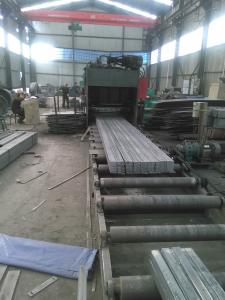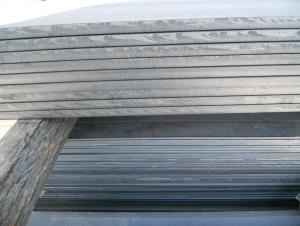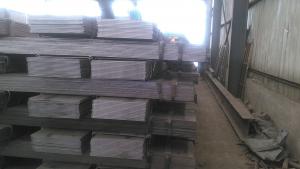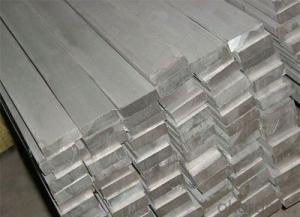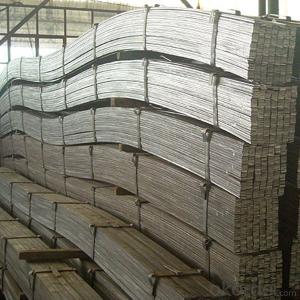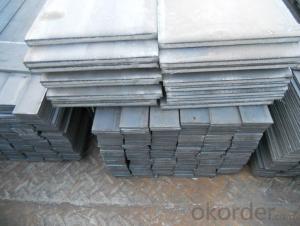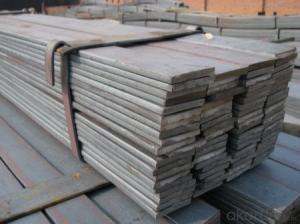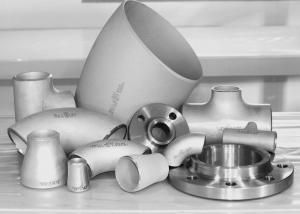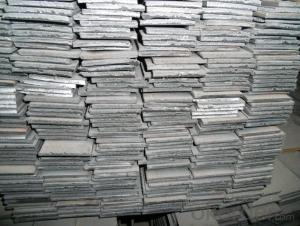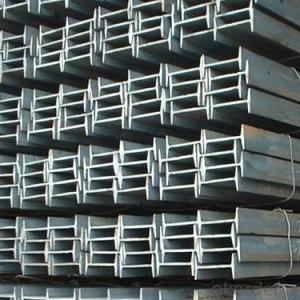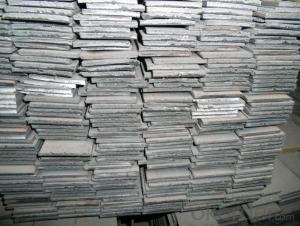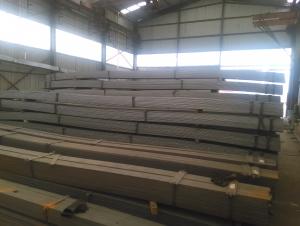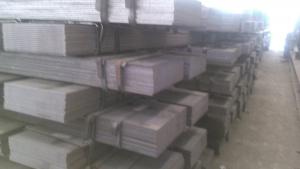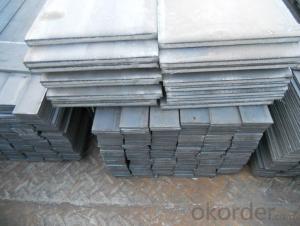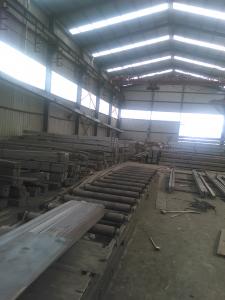Prime Low Carbon Alloy Flat Steel Bars Slitted
- Loading Port:
- Tianjin
- Payment Terms:
- TT or LC
- Min Order Qty:
- 50 m.t.
- Supply Capability:
- 10000T m.t./month
OKorder Service Pledge
OKorder Financial Service
You Might Also Like
Product Description:
OKorder is offering Prime Low Carbon Alloy Flat Steel Bars Slitted at great prices with worldwide shipping. Our supplier is a world-class manufacturer of steel, with our products utilized the world over. OKorder annually supplies products to African, South American and Asian markets. We provide quotations within 24 hours of receiving an inquiry and guarantee competitive prices.
Product Applications:
Prime Low Carbon Alloy Flat Steel Bars Slitted are ideal for structural applications and are widely used in the construction of buildings and bridges, and the manufacturing, petrochemical, and transportation industries.
Product Advantages:
OKorder's Prime Low Carbon Alloy Flat Steel Bars Slitted are durable, strong, and wide variety of sizes.
Main Product Features:
· Premium quality
· Prompt delivery & seaworthy packing (30 days after receiving deposit)
· Can be recycled and reused
· Mill test certification
· Professional Service
· Competitive pricing
Product Specifications:
Manufacture: slited
Slitting precision (width) : 0.5 mm or less
Raw material: Q235B, Q345B, Q235-1 b
crosscutting precision (length) : 2 mm or less
Processing: the thickness of 2.0-16 mm;
Shear length: 2000 mm above
Wide degree: 15-1250 - mm;
Leveling precision: 1-2 MM square
Packaging: Export packing, nude packing, bundled
FAQ:
Q1: Why buy Materials & Equipment from OKorder.com?
A1: All products offered byOKorder.com are carefully selected from China's most reliable manufacturing enterprises. Through its ISO certifications, OKorder.com adheres to the highest standards and a commitment to supply chain safety and customer satisfaction.
Q2: what is the difference between actual weight and theoretical weight?
A2: All the section steel has two weights: actual weight and theoretical weight. Actual weight is the weighing out when the product delivered from the mill. Theoretical weight is calculated by pieces. The invoice can be based on each of them as your request.
Q3: what is the difference between actual weight and theoretical weight?
A3: All the section steel has two weights: actual weight and theoretical weight. Actual weight is the weighing out when the product delivered from the mill. Theoretical weight is calculated by pieces. The invoice can be based on each of them as your request.
Images:
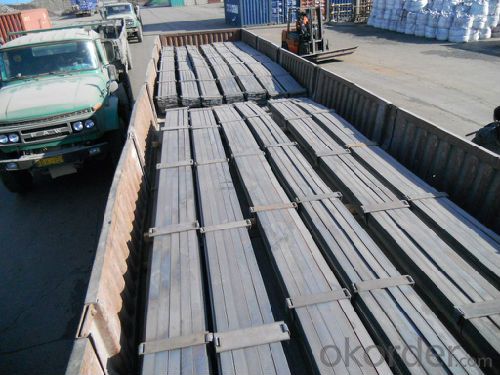
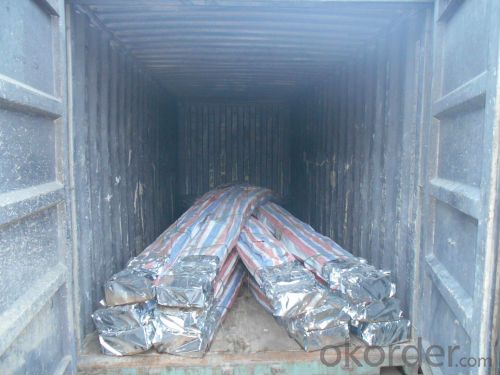
- Q: Are steel flat bars suitable for making brackets or supports for fire protection systems?
- Yes, steel flat bars are suitable for making brackets or supports for fire protection systems. Steel is known for its strength and durability, making it a reliable material for constructing brackets or supports. Fire protection systems often require sturdy and heat-resistant components, and steel flat bars can meet these requirements. They can be easily fabricated and welded to create customized brackets or supports that can withstand the weight and stress of fire protection systems. Additionally, steel is non-combustible and has a high melting point, which further enhances its suitability for fire protection applications.
- Q: How do you determine the impact strength of a steel flat bar?
- The impact strength of a steel flat bar can be determined by conducting a Charpy V-notch test. In this test, a notched sample of the steel bar is struck by a swinging pendulum, and the energy absorbed by the sample during fracture is measured. This energy is then used to calculate the impact strength, which indicates the material's ability to withstand sudden loading or dynamic forces.
- Q: How large is the flat steel used for equipotential grounding?
- According to the GB 50054-2011 3.2.15 6# responses (table 3.2.15), the distribution system of equipotential bonding conductor may be 25mm2 copper; when the 1/2PE line section of not less than the case, must use 25mm2 copper (or the equivalent capacity of aluminum or steel); according to the GB 50057-2010 5.1.2 (table 5.1.2), lightning protection system equipotential bonding conductors with 16mm2 copper, can meet the minimum section of all the connecting parts of the requirements of lightning protection device. Therefore, "lightning protection system equipotential" equipotential bonding conductor specification is greater than "distribution system equipotential" equipotential connection conductor is not necessarily established.
- Q: What are the different methods of surface sanding for steel flat bars?
- There are several different methods of surface sanding for steel flat bars. The choice of method depends on the desired finish and the specific requirements of the project. 1. Hand Sanding: This method involves using sandpaper or sanding blocks to manually sand the surface of the steel flat bars. It is a simple and cost-effective method, but it can be time-consuming and may not provide a uniform finish. 2. Belt Sanding: Belt sanding machines use abrasive belts to remove material from the surface of the steel flat bars. They are efficient and can achieve a consistent finish. Belt sanding machines come in different sizes and with various grit options, allowing for customization based on the desired outcome. 3. Disc Sanding: Disc sanding machines utilize rotating sanding discs to remove material from the surface of the steel flat bars. They can be used for heavy material removal or fine finishing, depending on the grit of the sanding discs. Disc sanding machines are available in different sizes and configurations to suit different needs. 4. Random Orbital Sanding: This method involves using a random orbital sander, which combines the spinning action of a disc sander with the random orbit motion of an orbital sander. The sanding discs used with this machine have a random pattern, which helps prevent swirl marks on the surface of the steel flat bars. Random orbital sanders are versatile and can be used for both material removal and fine finishing. 5. Vibratory Sanding: Vibratory sanding machines use vibration to remove material from the surface of the steel flat bars. They are often used for deburring, as well as for achieving a smooth finish. Vibratory sanding machines come in various sizes and can be equipped with different types of media, such as ceramic stones or plastic pellets, depending on the desired outcome. 6. Grinding: Grinding is a more aggressive method of surface sanding that uses a grinding wheel or disc to remove material from the steel flat bars. It is commonly used for heavy material removal, such as removing welds or shaping the steel flat bars. Grinding can be done manually or with the use of grinding machines, depending on the size and complexity of the project. Each method of surface sanding for steel flat bars has its advantages and limitations. The choice of method should be based on factors such as the desired finish, the amount of material to be removed, and the resources available. It is important to consider safety precautions and wear appropriate protective equipment, such as goggles and gloves, when using any of these methods.
- Q: What are the advantages of using steel flat bars?
- Steel flat bars have numerous benefits when used in various applications. Firstly, they possess outstanding strength and durability. Steel is renowned for its high tensile strength, making it a dependable option for structural purposes. Whether utilized in construction, manufacturing, or fabrication, steel flat bars can endure heavy loads and deliver long-lasting performance. Moreover, steel flat bars exhibit remarkable versatility. They can be easily molded, bent, or cut to meet specific project requirements. This adaptability renders steel flat bars suitable for an array of applications, including support beams, frames, braces, and brackets. Furthermore, steel flat bars showcase excellent resistance to corrosion. Through proper treatment and finishing techniques, such as galvanization or painting, steel flat bars can withstand harsh environmental conditions, including exposure to moisture, chemicals, and extreme temperatures. This corrosion resistance ensures the longevity and reliability of steel flat bars, thereby reducing maintenance and replacement costs in the long run. Additionally, steel flat bars offer cost-effectiveness. Steel is a widely accessible and affordable material, making it an economical choice for numerous industries. Furthermore, the durability and extended lifespan of steel flat bars result in reduced maintenance and replacement expenses, leading to significant cost savings over time. Lastly, steel flat bars are environmentally friendly. Steel is a highly recyclable material, enabling sustainable use and minimizing the overall ecological impact. By incorporating steel flat bars into construction and manufacturing processes, companies can contribute to a more sustainable future by reducing waste and conserving natural resources. In summary, the advantages of utilizing steel flat bars include exceptional strength, versatility, corrosion resistance, cost-effectiveness, and eco-friendliness. These characteristics establish steel flat bars as the preferred choice for a broad range of applications across various industries.
- Q: Are steel flat bars suitable for indoor applications?
- Yes, steel flat bars are suitable for indoor applications. They are commonly used in various indoor settings such as construction, furniture manufacturing, and interior design due to their strength, durability, and versatility.
- Q: What are the maximum allowable spans for steel flat bars?
- The maximum spans that steel flat bars can have are subject to variation based on a range of factors, including the applied load, steel type, and intended use. Typically, the determination of the maximum span for steel flat bars involves consideration of deflection, bending stress, and safety factors. For lighter applications and smaller loads, steel flat bars may have maximum spans ranging from a few feet to several feet. However, in the case of heavier loads and structural applications, the maximum allowable spans could be significantly reduced to ensure structural integrity and prevent excessive deflection. Engineers and designers employ various calculations and design codes, such as the American Institute of Steel Construction (AISC) standards, to establish the maximum allowable span for steel flat bars. These standards outline guidelines for maximum allowable stress, deflection limits, and safety factors that should be taken into account during the determination of the span. To ascertain the specific maximum allowable spans for steel flat bars, it is crucial to consult a structural engineer or refer to relevant design codes and standards that align with the particular application and load requirements.
- Q: Are steel flat bars available in different thicknesses?
- Indeed, one can find steel flat bars of varying thicknesses. These bars are manufactured in an assortment of sizes and dimensions to cater to diverse purposes. The width of a steel flat bar can span from extremely slim, measuring 1/8 inch or 3.18 mm, to considerably broader choices like 1 inch or 25.4 mm. The assortment of thicknesses accessible grants flexibility in their utilization, be it for construction, manufacturing, or alternative industrial applications.
- Q: What is the weight of a standard steel flat bar?
- The weight of a standard steel flat bar can vary depending on its dimensions and thickness. However, a typical standard steel flat bar may weigh around 3.5 to 7.5 pounds per foot.
- Q: How do steel flat bars compare to titanium flat bars?
- Steel flat bars are generally stronger and more durable compared to titanium flat bars. Steel has a higher tensile strength, making it suitable for heavy-duty applications and structural support. Titanium, on the other hand, is lighter and more corrosion-resistant, making it ideal for industries like aerospace, where weight reduction and high resistance to corrosion are crucial. Ultimately, the choice between steel and titanium flat bars depends on the specific requirements of the project or application.
Send your message to us
Prime Low Carbon Alloy Flat Steel Bars Slitted
- Loading Port:
- Tianjin
- Payment Terms:
- TT or LC
- Min Order Qty:
- 50 m.t.
- Supply Capability:
- 10000T m.t./month
OKorder Service Pledge
OKorder Financial Service
Similar products
Hot products
Hot Searches
Related keywords
